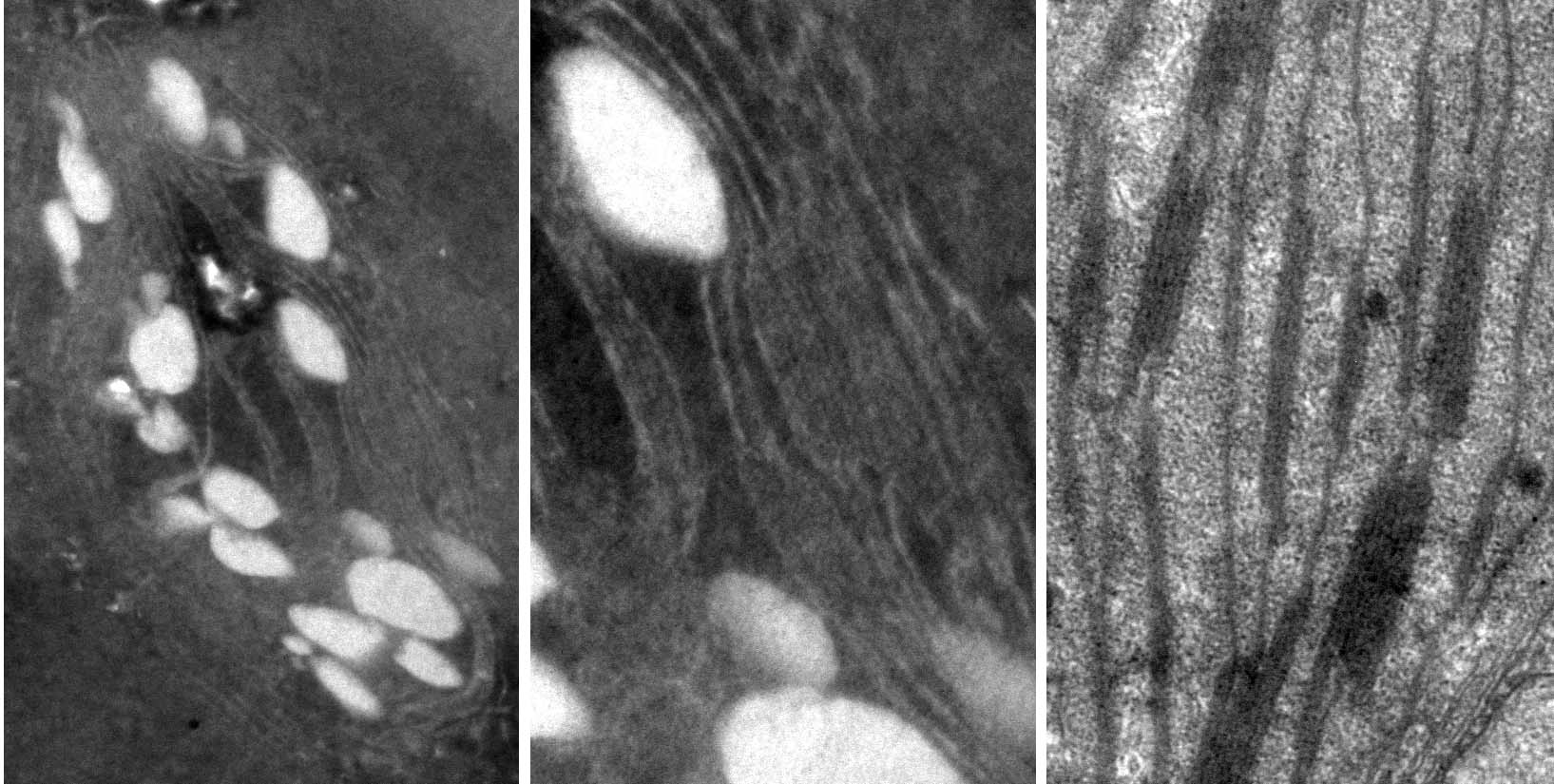Plant cytoplasm fossil is a rarely touched topic in palaeontology although there are increasing reports on it in other countries. After careful studying, plant cytoplasm that formerly was thought impossible to preserve has now turned out to a possibility in palaeontology. Although there have been some reports of plant cytoplasm fossils in China, chloroplast, which is the largest organelle in plant cells, has been missing in Asia hitherto.
After years of intensive cooperative investigation with colleagues from other universities, Professor WANG Xin from Nanjing Institute of Geology and Palaeontology, Chinese Academy of Sciences and his team reported the ultrastructures of chloroplasts in a Nelumbo leaf recovered from the Eocene of Changchang Basin, Hainan Island, China. Similar reports have been made in America and Europe before, but in Asia this report is the first one.
Previous research has indicated that various parts of fossil Nelumbo have been preserved autochthonously in the Changchang Basin of Hainan. To deepen the understanding of the fossil plant, the research team integrated the expertise of its members, sampled from a fossil Nelumbo leaf, performed light microscopic, scanning and transmission electron microscopic observations. After overcoming various difficulties, they confirmed the existence of starch grains and grana with stacked thylakoid membranes, which are characteristic of chloroplasts, in the fossil plant tissues.
The paper is published online recently in Plant Systematics and Evolution.
Related information: Wang X, Liu W, Du K, He X, Jin J: Ultrastructure of chloroplasts in fossil Nelumbo from the Eocene of Hainan Island, South China. Plant Systematics and Evolution 2014. DOI: 10.1007/s00606-014-1056-2


